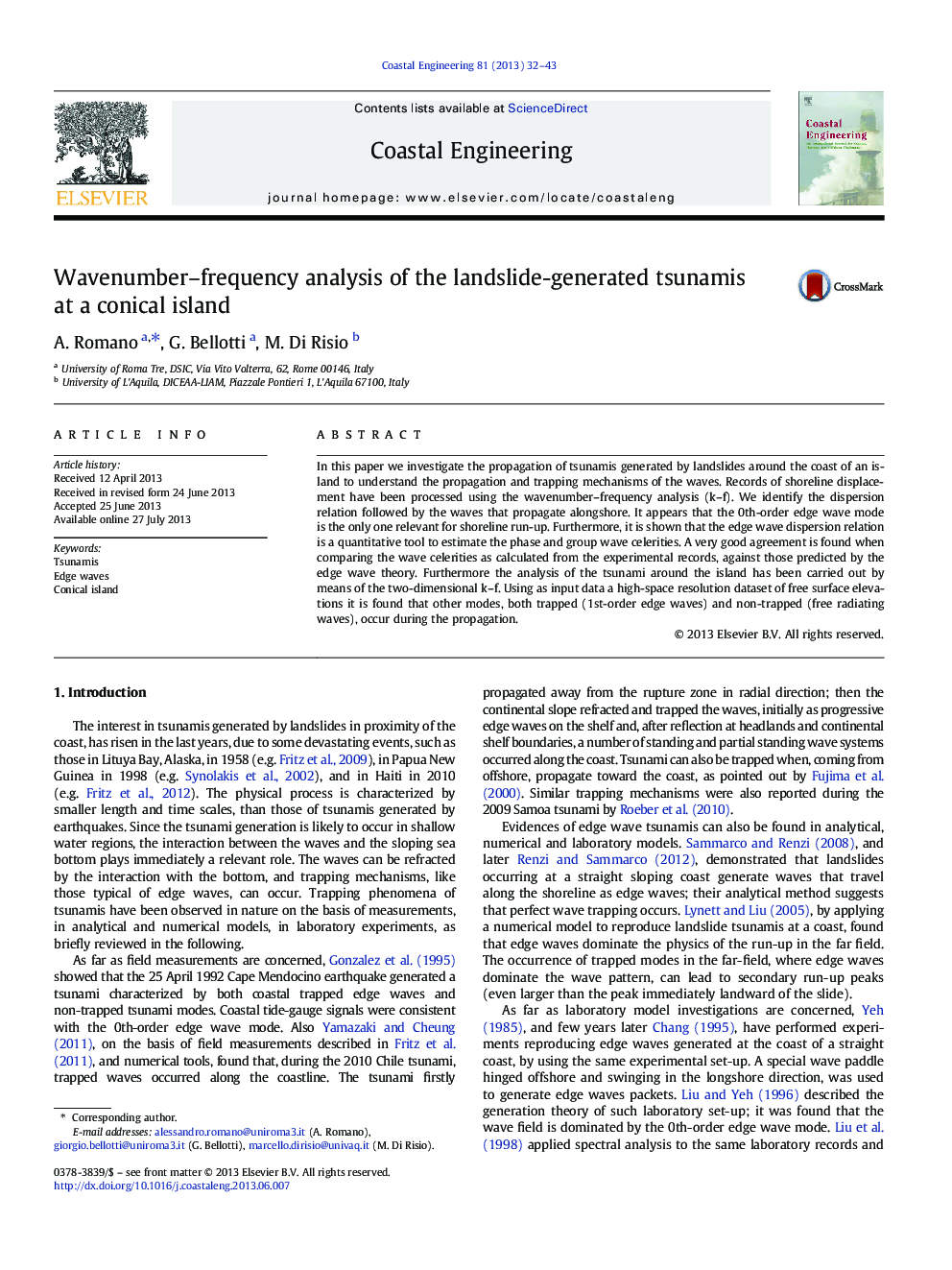| Article ID | Journal | Published Year | Pages | File Type |
|---|---|---|---|---|
| 8059886 | Coastal Engineering | 2013 | 12 Pages |
Abstract
In this paper we investigate the propagation of tsunamis generated by landslides around the coast of an island to understand the propagation and trapping mechanisms of the waves. Records of shoreline displacement have been processed using the wavenumber-frequency analysis (k-f). We identify the dispersion relation followed by the waves that propagate alongshore. It appears that the 0th-order edge wave mode is the only one relevant for shoreline run-up. Furthermore, it is shown that the edge wave dispersion relation is a quantitative tool to estimate the phase and group wave celerities. A very good agreement is found when comparing the wave celerities as calculated from the experimental records, against those predicted by the edge wave theory. Furthermore the analysis of the tsunami around the island has been carried out by means of the two-dimensional k-f. Using as input data a high-space resolution dataset of free surface elevations it is found that other modes, both trapped (1st-order edge waves) and non-trapped (free radiating waves), occur during the propagation.
Keywords
Related Topics
Physical Sciences and Engineering
Engineering
Ocean Engineering
Authors
A. Romano, G. Bellotti, M. Di Risio,
